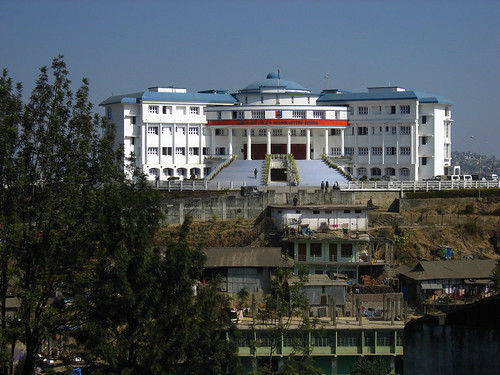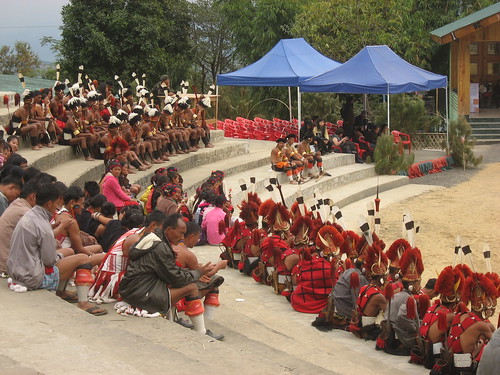On Day Five of the Hornbill Festival, I decided to take a short walk up the hill behind the Kisama Heritage Village. It wasn't sunny but I felt the need for some proper exercise and I'd rather it to be cool when I have to do exercise. (One reason I enjoy staying with my friends in Bara Bosti here in Kohima, is that I have to climb up the hill to get back.)
So after running into a Sumi friend who then pointed me in the direction of the path up the hill, the sign I found said that it was 1.85km to the top of 'Mt Kisama'. I'm a little confused about this, because later there was another sign that said 'Mezabo Hill'. I'm going to have to find someone from Phesama village to explain this...

The walk itself was pleasant enough. Some parts of the track were quite slippery. I didn't have shoes with good traction, so I ended up taking more time to come down than I did going up.
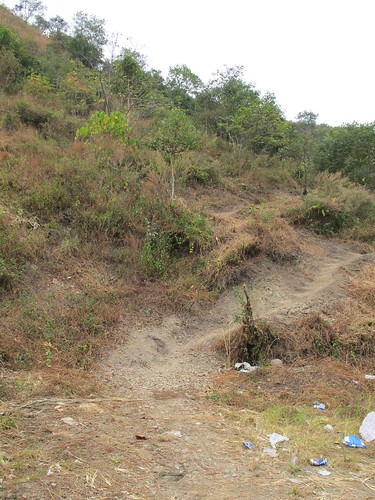
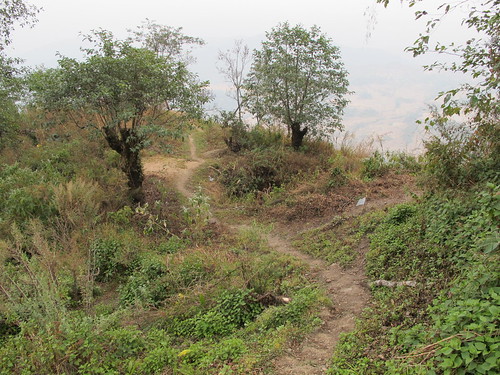
Just a little way up the hill and I was already treated to a great view of the heritage village, with the nearby village of Kigwema (I believe)on the ridge in the background. Below the village, the terraced fields are pretty impressive (and pretty too).
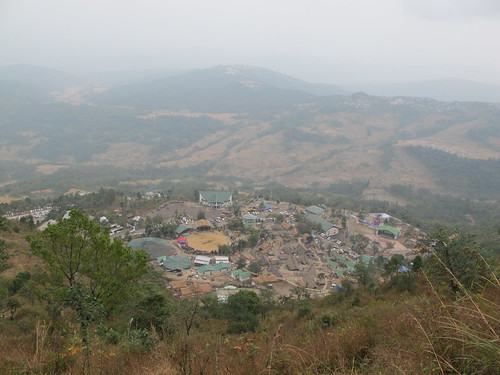
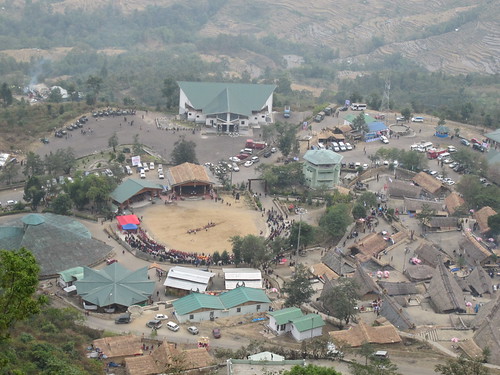
At the top of the hill, which seemed to be called 'Mezabo', there was a nice little picnic area that seemed to be maintained by the nearby village of Phesama.

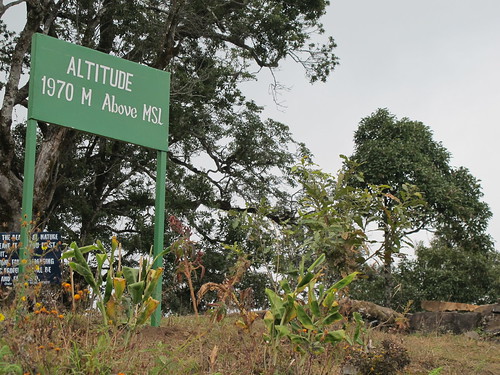
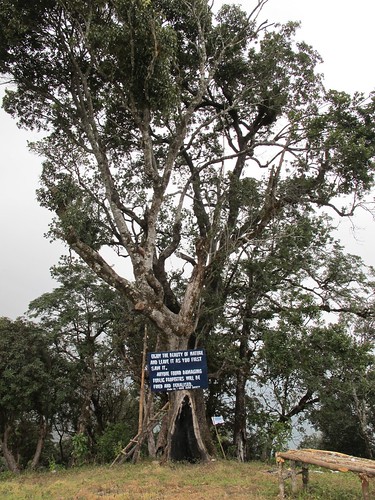
There was also a little lookout pavilion next to the picnic area.
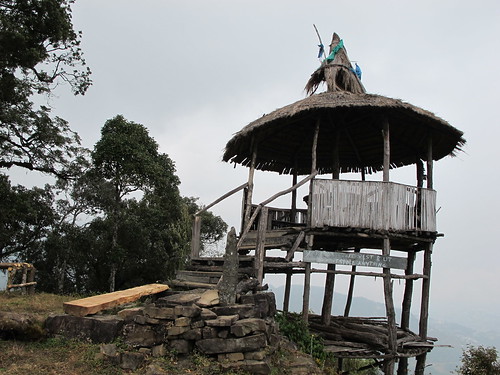
From the lookout, I could see Phesama below and Kohima in the distance. Sadly, the whole valley was covered in cloud / mist at the time, so the photos weren't great.

On my way back down the hill, I spoke to some of the Assam Rifles soldiers who were on duty. A Bengali guy from Kolkata sat me down and offered me a cup of black tea. My knees needed a break and I was starting to feel cold, so I said yes. Also, I try not to reject any offers made by men holding semi-automatic weapons.
We spoke for a few minutes, mostly in English and he told me how he'd been posted to Nagaland for the last 7 years. I ended up taking a photo with him and with the younger soldier who was on duty with him. The younger guy was from the Khiamniungan tribe, a 'minor' Naga tribe from the eastern part of the state. Incidentally, I have to admit that Khiamniungan men's shawls are my favourite among the Naga tribes, but sadly I didn't know how to say it in Nagamese.
In the end, the young guy took out his mobile phone and took a picture of us as well. I'm glad he did - after all, why should foreigners be the only ones with photos to show their friends back home?
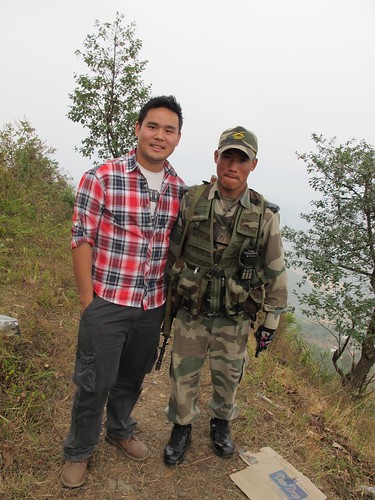
So after running into a Sumi friend who then pointed me in the direction of the path up the hill, the sign I found said that it was 1.85km to the top of 'Mt Kisama'. I'm a little confused about this, because later there was another sign that said 'Mezabo Hill'. I'm going to have to find someone from Phesama village to explain this...

The walk itself was pleasant enough. Some parts of the track were quite slippery. I didn't have shoes with good traction, so I ended up taking more time to come down than I did going up.


Just a little way up the hill and I was already treated to a great view of the heritage village, with the nearby village of Kigwema (I believe)on the ridge in the background. Below the village, the terraced fields are pretty impressive (and pretty too).


At the top of the hill, which seemed to be called 'Mezabo', there was a nice little picnic area that seemed to be maintained by the nearby village of Phesama.



There was also a little lookout pavilion next to the picnic area.

From the lookout, I could see Phesama below and Kohima in the distance. Sadly, the whole valley was covered in cloud / mist at the time, so the photos weren't great.

On my way back down the hill, I spoke to some of the Assam Rifles soldiers who were on duty. A Bengali guy from Kolkata sat me down and offered me a cup of black tea. My knees needed a break and I was starting to feel cold, so I said yes. Also, I try not to reject any offers made by men holding semi-automatic weapons.
We spoke for a few minutes, mostly in English and he told me how he'd been posted to Nagaland for the last 7 years. I ended up taking a photo with him and with the younger soldier who was on duty with him. The younger guy was from the Khiamniungan tribe, a 'minor' Naga tribe from the eastern part of the state. Incidentally, I have to admit that Khiamniungan men's shawls are my favourite among the Naga tribes, but sadly I didn't know how to say it in Nagamese.
In the end, the young guy took out his mobile phone and took a picture of us as well. I'm glad he did - after all, why should foreigners be the only ones with photos to show their friends back home?

